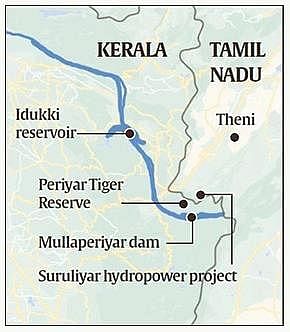Test: Weekly Current Affairs: May 1st to 7th, 2024 - UPSC MCQ
25 Questions MCQ Test Current Affairs & Hindu Analysis: Daily, Weekly & Monthly - Test: Weekly Current Affairs: May 1st to 7th, 2024
Consider the following statements:
- The Representation of the People Act, 1951 (RP Act) provides for law relating to expenditure incurred by ‘leaders of a political party’.
- The RP Act provides that a recognised political party can appoint a maximum of 40 star campaigners while a registered unrecognized political party can appoint up to 20.
Which of the statements given above is/are correct?
Consider the following statements:
- Inheritance Tax is a tax levied on the inheritance received by beneficiaries after the death of the owner of the assets.
- Inheritance Tax only applies to monetary inheritance and does not include non-monetary assets like property or investments.
Which of the statements given above is/are correct?
Which of the following statements about biohacking is true?
What is the primary objective of Project ISHAN initiated by the Indian government?
Consider the following statements about Salmonella :
- It is a virus.
- Its infection is typically transmitted through airborne droplets.
- It can cause food poisoning.
How many of the above statements are correct?
Consider the following statements.
- Preservation of forest areas in India under the Forest Conservation Act, 1980 has been monitored by the Supreme Court.
- Deemed forests refer to land tracts that appear to be a “forest”, but have not been notified so by the government or in historical records.
- Deemed forests comprise about one fourth of India’s forest land.
How many of the above statements are correct?
Consider the following:
- NSE NOW
- ONICRA
- BSE Bolt
- SMERA
- NCDEX
How many of the above Electronic Trading Platforms (ETPs) are operating in India?
Consider the following statements:
- G-Secs are issued only by the Central Government of India.
- G-Secs are primarily used as a tool for financing state government projects.
- G-Secs in India are always issued in the form of equity shares.
- G-Secs are considered risk-free investments because they are backed by the full faith and credit of the Indian government.
How many of the above statements are correct?
Consider the following pairs[River: Origin]:
- Narmada River: Amarkantak Hill
- Tapi River: Satpura Range
- Cauvery River: Brahmagiri Range
How many of the above pairs are correctly matched?
Consider the following statements:
- Recently, IREDA (Indian Renewable Energy Development Agency), the financing agency for Renewable projects in India, was conferred with ‘Navratna status’.
- The ‘Navratna status’ is given by the Department for Promotion of Industry and Internal Trade.
- IREDA is under the administrative control of the Ministry of New and Renewable Energy.
How many of the above statements are correct?
With reference to regulation and administration of Geographical Indication (GI) in India, consider the following statements:
- In India, GI registration is governed by the Geographical Indications of Goods Act of 1999.
- The GI tag is issued by the Geographical Indication Registry under the Department of Industry Promotion and Internal Trade, Ministry of Commerce and Industry.
Which of the statements given above is/are correct?
Consider the following statements.
- Core inflation is a measure of the total inflation within an economy, including commodities such as food and energy prices.
- Core inflation typically rises and falls more gradually than inflation in food and fuel.
Which of the above statements is/are correct?
Which of the following is a consequence of hyperinflation?
What best characterizes the concept of “entrenched inflation”?
Which of the following best defines the causes of demand-pull inflation?
Consider the following statements about Raja Ravi Varma:
- He is often referred to as the “Father of Modern Indian Art.”
- He was born in France and later moved to India.
- He created an epic painting “Shakuntala searching for Dushyanta”.
How many of the above statements are correct?
In legal terms, what does the “Eggshell Skull” refer to?
Consider the following statements:
- Thrombosis is the process of blood clot formation within a blood vessel.
- Thrombosis only occurs in arteries.
- Thrombosis is always caused by physical injury to the blood vessel.
How many of the above statements are correct?
Consider the following statements about Spices Board:
- It is one of the five Commodity Boards functioning under the Ministry of Commerce & Industry.
- It is responsible for the overall development of the cardamom industry and export promotion of 52 spices listed in the schedule of the Spices Board Act, 1986.
Which of the statements given above is/are correct?
Which of the following statements accurately describes apartheid in South Africa?
Consider the following statements about Petroleum and Explosives Safety Organization (PESO):
- It is a department formed by the Government of India under the Department for Promotion of Industry and Internal Trade of the Ministry of Commerce and Industry.
- It has been serving the nation as a nodal agency for regulating safety of hazardous substances such as explosives, compressed gas and petroleum.
Which of the statements given above is/are correct?
Consider the following statements about GST Appellate Tribunal (GSTAT):
- Under the GST laws, the GSTAT is a specialized appellate authority for resolving disputes.
- The appeals against the orders in first appeals issued by the Appellate Authorities under the Central and State GST Acts lie before the GST Appellate Tribunal, which is common under the Central as well as State GST Acts.
Which of the statements given above is/are correct?
Which of the following statements about the electromagnetic spectrum is correct?
Which of the following statements about oxytocin is true?
Consider the following statements:
- Mullaperiyar Dam is built at the confluence of the Mullayar and Periyar rivers.
- The Periyar National Park is located around the dam’s reservoir.
Which of the statements given above is/are correct?
|
39 videos|4389 docs|929 tests
|
|
39 videos|4389 docs|929 tests
|



















